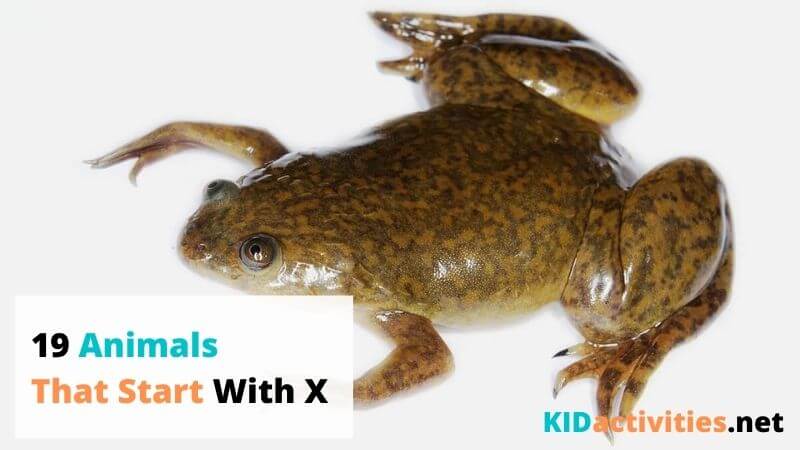Who’s ready to read a list of animals that start with the letter x? I know I am, let’s get started.
Have you ever wondered how many animals start with an X? While it might sound unbelievable we can definitely say that there is a long list. You may doubt this but there are actually more than 8 million animal species in the world.
If you are getting a bit curious, in this article you will find a long list of animals and species that start with the letter X. The list includes mammals, birds and fish!
Let’s get right to it!
19 Animals That Start With X
1.X-ray Tetra
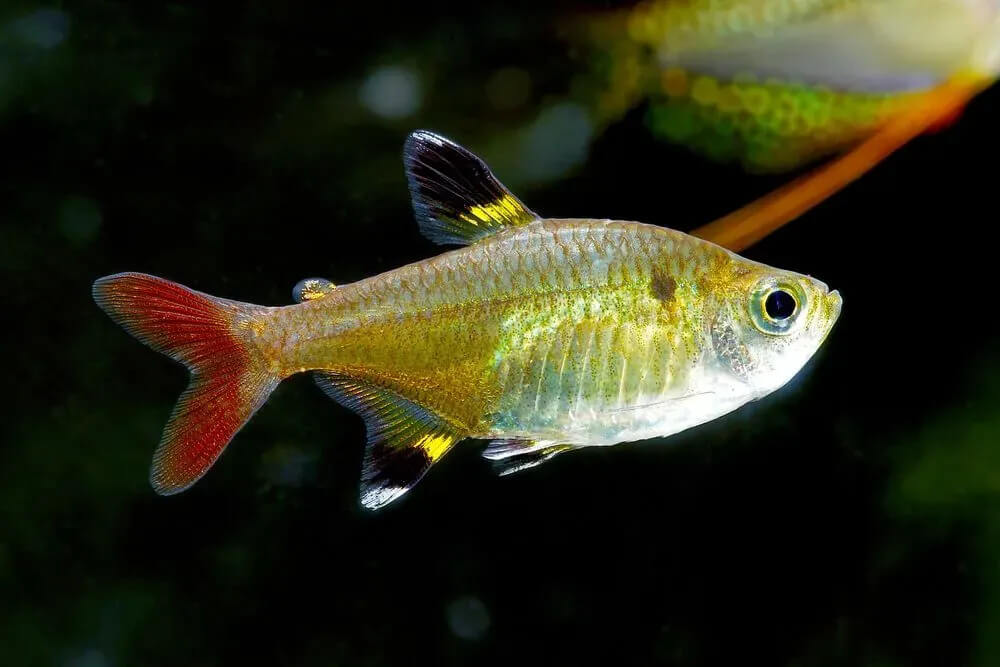
X-ray Tetra is a community fish that belongs to the species of characin in the genus Pristella. This species mostly lives in Brazil, French Guiana, Guyana and Venezuela.
In general X-ray Tetra is a small fish and the maximum size that can reach is 5cm (2”).
It is a friendly fish that can easily be mixed with other species. X-ray Tetra is a good choice for a beginner as their peaceful nature allows them to live in a homier place.
As a community fish, it should be kept with at least 6 other individuals and should be housed in a darkly furnished aquarium. It is worth mentioning that there is also a gold variety available.
Another common name for X-ray Tetra is Water Goldfinch and Pristella. This fish eats plankton, worms, and small insects.
The most suitable food for X-ray Tetra fish that is kept in a home environment is Flake, micropellets, frozen foods such as daphnia, brine shrimp, mosquito larvae etc.
2. Xerus
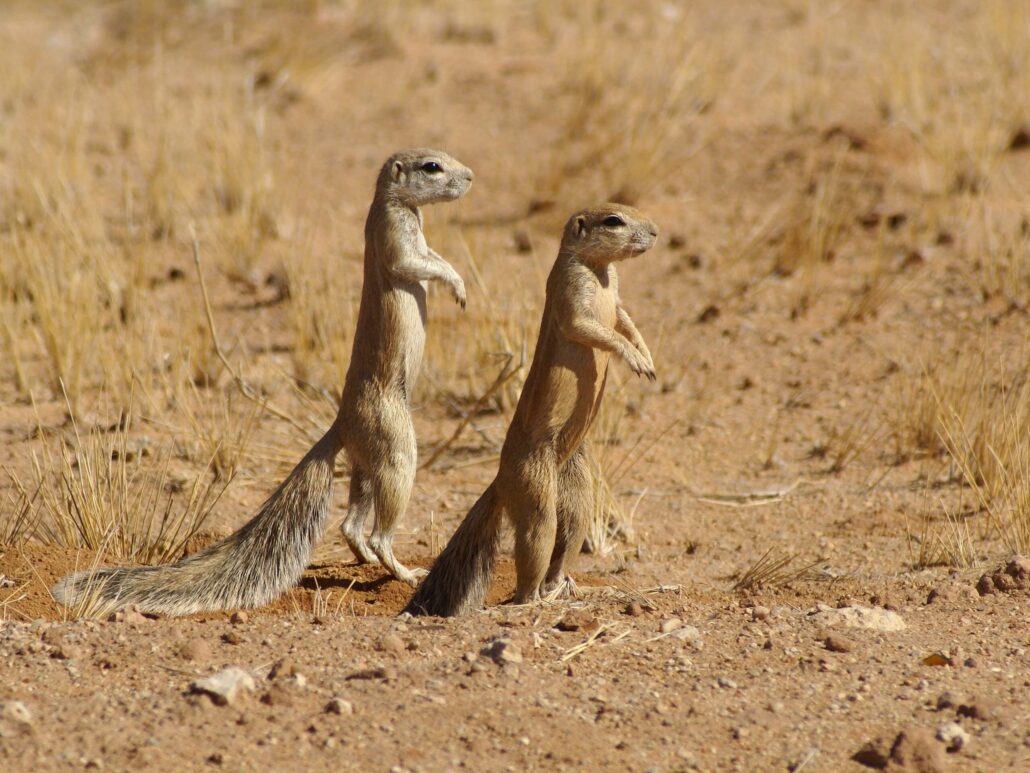
Xerus is the African ground squirrel that belongs in the family Sciuridae, the squirrel family.
As their name shows, Xerus are terrestrial, ground-dwelling, squirrels cousins of the marmots and prairie dogs.
The African ground squirrel has spiny fur, very short ears, long claws, and a long tail. African ground squirrels mostly live in dry, grassland and rocky habitats.
Xerus is considered an omnivorous species with a diet that typically consists of plants, such as fruit, grasses and herbs along with insects, eggs, and smaller animals.
The African ground-dwelling Xerus feed on crops and in some specific regions from pests.
The native African squirrel can live in captivity for about 11.5 years.
3. Xoloitzcuintli
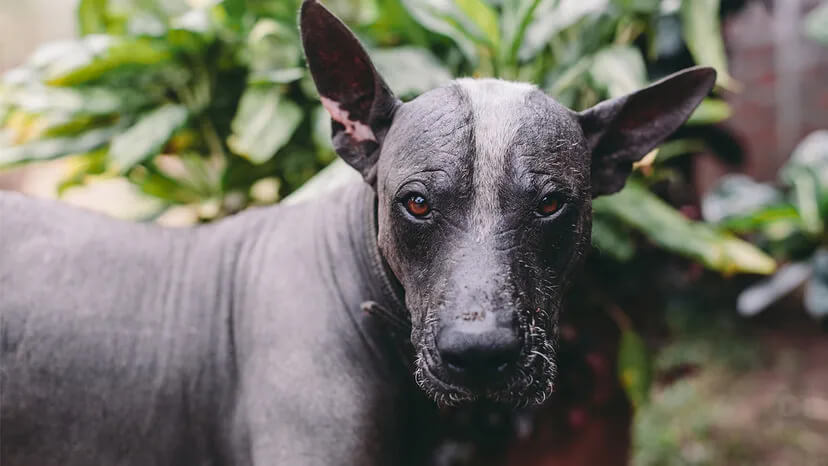
Xoloitzcuintle is one of several breeds of hairless dogs. This breed can be found in 3 different sizes, toy, miniature, and standard, and two varieties, the hairless and coated.
The hairless variety has tough, smooth, close-fitting skin and the coated variety is covered by a short and flat coat.
Both the varieties come in dark colours, such as black, grey-black, bronze, slate and red. Xoloitzcuintli’s lifespan range from 13 to 18 years.
The natural environment of this dog breed is Mexico and they are commonly known as Xolos. Xolos are well known for their loyalty and they live better in packs.
Those animals usually create strong bonds with a particular person pf the family, but everyone can feel their warmth and friendliness.
Xolos love having other dogs around, but sometimes they feel reserved when having strangers around.
In general, they are not aggressive and they are considered friendly and family dogs.
Xoloitzcuintle history is going more than 3,500 years and they played a significant role in Precolumbian life. The ancient Xoloitzcuintle that lived with the Aztecs and Mayas were considered man’s best friends.
4. Xantus Hummingbird

Xami Hairstreak is commonly referred to as the xami hairstreak or green hairstreak.
It is a butterfly that is included in the subgenus Xamia and the genus Callophrys in the family Lycaenidae.
It is a rare butterfly and typically lives primarily in the southern U.S., specifically the southern and southeastern parts of Arizona and central Texas.
However, except for the southern U.S, Xantus Hairstreak can also be found in Mexico and Guatemala. Xami Hairstreak wing size range from 2.38 to 2.86 cm.
The underside of Xantus Hairstreak has a yellowish-green colour. The wing also contains the postmedian white line, located in the posterior to the middle wing.
The natural habitat of Xantus Hairstreak is coniferous woodland forests and in sunny areas along with mountain and canyon slopes that can provide a slight side with shade.
According to the climate, this species of butterfly can live from cold to warm climates that consist of multiple weather patterns.
τhe colour and morphology of its hind wings help Xami Hairstreaks to avoid predators, as they appear as a fake head.
Flight Behaviour
Xami Hairstreak is doing two or more flights per year. The most often periods of mitigation are between the months of March and December.
The most common mitigation place that has the largest number of Xami Hairstreak butterflies is the country of Mexico, which offers the largest geographical range.
5. Xingu Corydoras
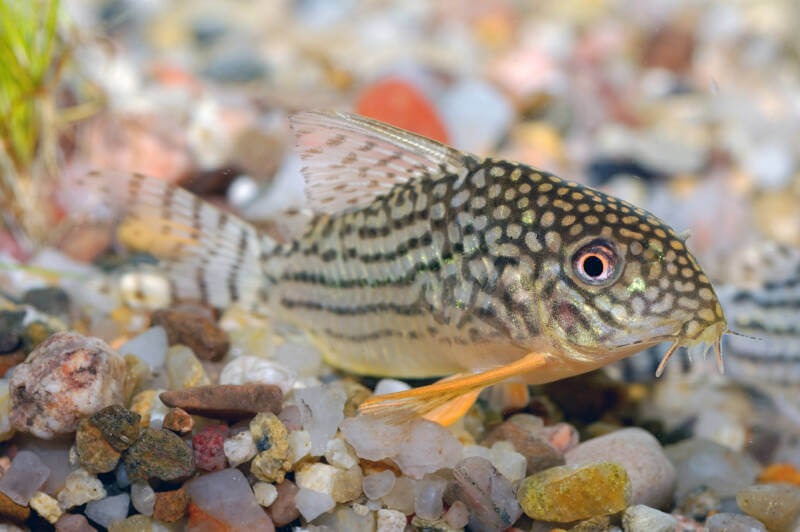
Xingu corydoras is a tropical freshwater fish that belongs to the subfamily Corydoradinae of the family Callichthyidae.
Its origins are based in South American waters, and the upper Xingu River basin in Brazil. Xingu Corydoras is named after the river in which it lives.
Xingu Corydoras will grow in length up to 3.7 centimetres (1.5 inches). It lives and grows in tropical climates with temperatures between 22–26 °C. Its main food is worms, benthic crustaceans, insects, and plant matter.
Xingu Corydoras lays its eggs in dense vegetation habitat but it doesn’t guard them at all. It is worth mentioning that this fish is considered quite important for the aquarium trade industry.
The males of this species have also a pinkish ting in their main body that is broken by brown speckles. However, Xingu Corydoras falls easily under the claws of the largest fish.
6. Xeme
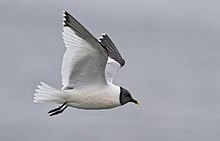
Xeme is one of the smallest gulls that fly over the seas. There are over 340,000 Xemes and their lifespan is around 18 years.
Xeme’s length ranges from 27 to 33 and their wings can open from 81 to 87 centimetres.
Xeme is easy to identify from its striking wing pattern. The males have pale grey backs and wings coverts.
Their primary flight feathers are black and the secondaries are white. Their tail has a white forked shape. It is worth mentioning that during the breeding season the male’s hood darkens. The bill is black and has a yellow tip.
Younger Xemes have the same triple colour feathers, with the difference that the black is replaced by brown, and the tail has a black terminal band.
It takes around two years for the young ones to become full adults and get the adult plumage.
7. Xenops
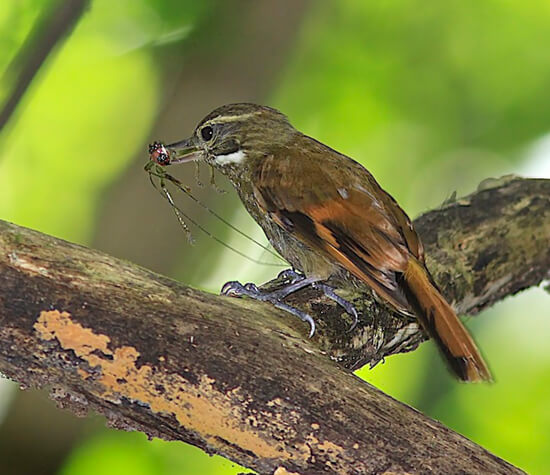
Panama Province, Panama, February, 2011
Xenops are a small genus of birds that can be found in Central and South America. Xenops is not considered a species but it is a genus
(a group of species that are related to each other).
There are three species of Xenops birds the slender-billed Xenops, the plain xenops, and the streaked xenops.
All those species of Xenops birds belong to the family of Furnariidae. The members of the specific family are also known as “ovenbirds”.
This name came from the shape of their nests. Their nests are built rounded in the shape that looks like an oven.
Characteristics of Xenops
Xenops birds are quite small in the size, but their symbolic characteristic is their long tail. They have thin brown lines, and their colouration is rufous-brown.
They like moving on all the surfaces of the trees as they are looking to feed on insects.
Xenops don’t use their long tail as a prop! Their colour makes them almost invisible in the trees, as their brownish colour is almost the same as the trunks.
The genus of Xenops birds can mostly be found in the tropical and subtropical rainforests and swamps of South and Central America.
8. Xenarthra
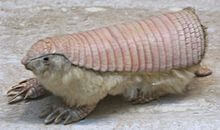
Xenarthra is a mammal that belongs to the family of sloths and anteaters lineage.
Xenarthrans come from South America and they originated from the Paleocene about 59 million years ago.
Nowadays, there are 31 Xenarthra living species, the anteaters, the tree sloths, and the armadillos.
Xenarthra living species mostly inhabit the rain forests and their most common habitat is in Latin America.
It is worth mentioning that Xenathras don’t share many common characteristics with other mammals.
Unlike other mammals, one of their most important characteristics is that they have extra joints that help grab their food more easily.
A typical diet for Xenathras mammals consists of insects such as ants and termites.
However, some of the species also get fed by plants or other smaller animals in their natural habitat. Some Xenathras tend to feed less, as they have a slow metabolism.
9. Xantus Leaf-toed Gecko
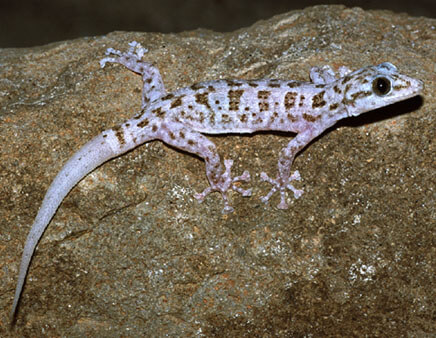
Leaf-toed Gecko is native to California and parts of North West Mexico and belongs to the species of lizards and in the family Phyllodactylidae. They prefer to live both in desert and shrubland.
At present Xantus Leaf-toed Gecko is considered a subspecies from the Raza Island.
It protects itself from the other predators by losing its fragile tail. Their most common predator enemies are large birds, snakes, and bigger lizards.
Their regular diet consists of flies, moths, spiders, ants, and termites. There is a large population of these small lizards as their females tend to lay a clutch of over 20 eggs in one reproduction cycle.
The most common fact is that female lizards lay their eggs for one whole year before clutching them. At the end of the reproduction cycle, the eggs take up to 89 days to hatch.
10. Xantic Sargo
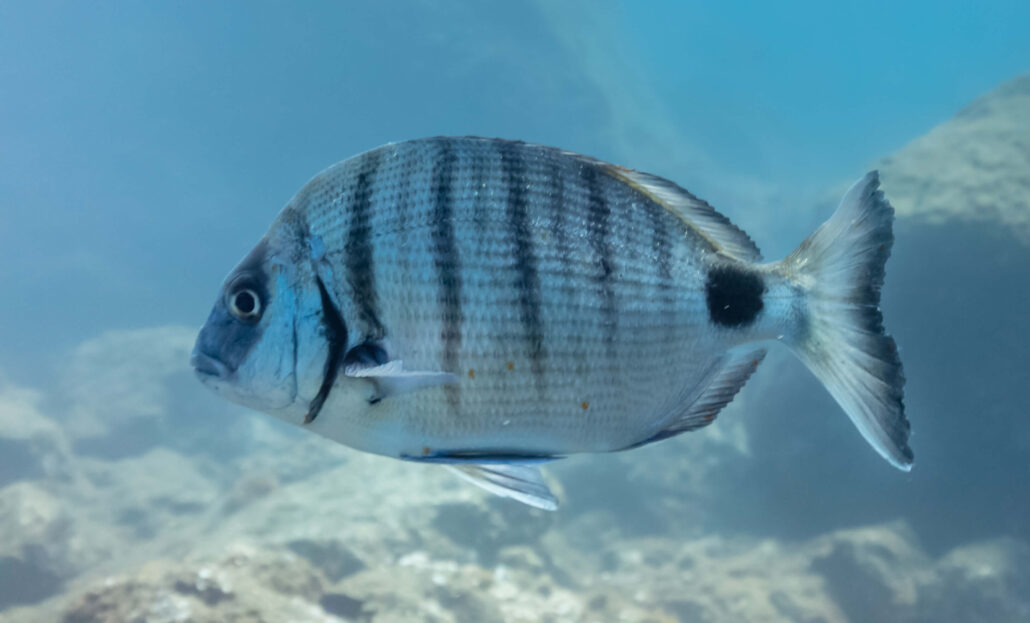
One of the most interesting creatures in the list of animals that start with an X is the Xantix Sargo. It is most commonly known as California Sargo, as its natural habitat is in the Pacific Ocean.
Xantic Sargo is a member of the grunt fish family that produces “grunting” sounds by rubbing together their flat teeth plates. It is considered an omnivore that inhibits in seaweed, kelp, and seagrass.
Xantic Sargo has a really diverse diet and feeds with plants, smaller fish, invertebrates, and crustaceans. It is also known as a nocturnal benthic feeder because it is inactive during the day and hunts its food only at night.
You will typically find Xantic Sargo close to rocks and other underwater structures. A diverse fact is the Xantic Sargos look for their food during the night near or over sandy bottoms.
The usual size of the Xantic Sargo is less than two feet and their weight is approximately ten to eleven pounds.
You can commonly see Xantic Sargo named by the name Sweetlips, as it has large pouty lips. During the days you will definitely find them staying motionless on the over reefs.
Xantic Sargos are mostly solitary until spawning season, but you can also find them swimming in schools.
11. Xavier’s Greenbul
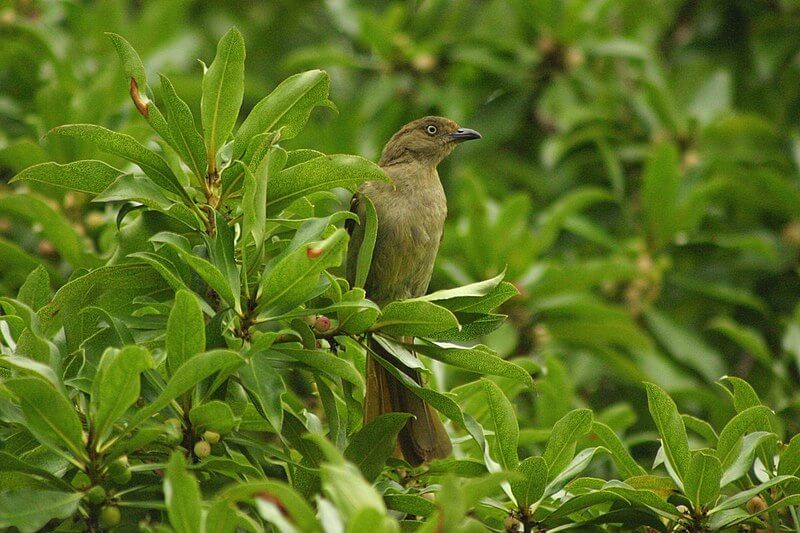
Xavier’s Greenbul is a species of songbird that belongs to the family of bulbul, Pycnonotidae.
In the family of Pycnonotidae, there are approximately 150 species You will find them in subtropical or tropical dry forests and subtropical or tropical moist lowland forests. Xavier’s Greenbul’s natural environment is in Africa.
It is an olive-green bird with brown wings, yellowish underparts, and a rufous tail. It is commonly known as a songbird or perching bird.
It is very similar to all the other bird species that are characterised by their beautiful voice, but they are slightly larger billed, with less red colour on their tail and upper tail.
12. Xenopus
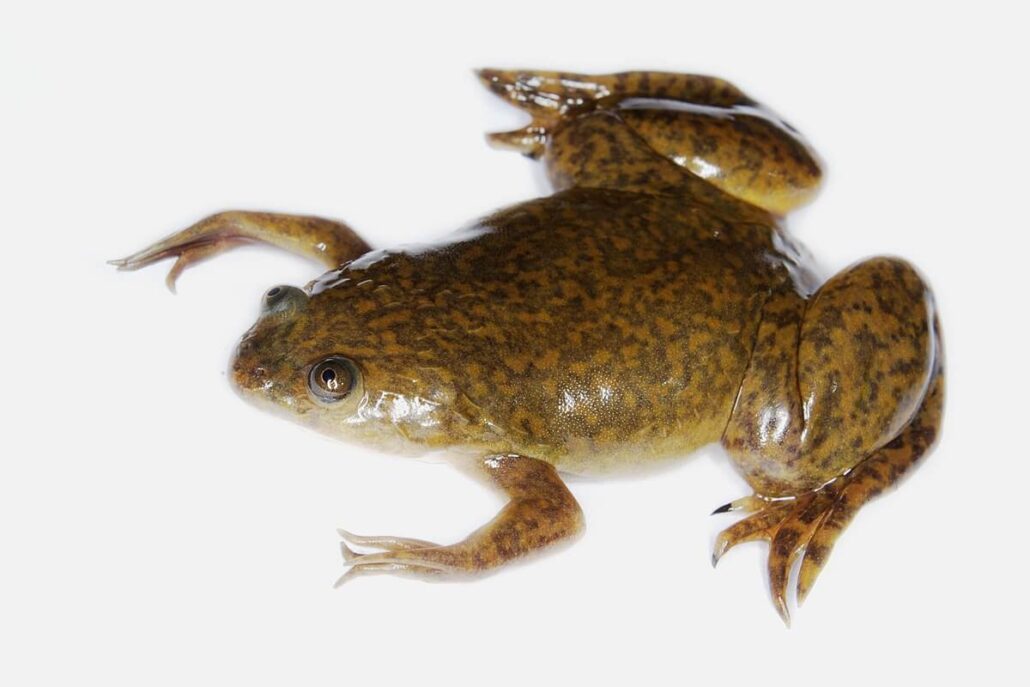
Xenopus is a genus of African frogs and it is commonly known as the African clawed frogs. Xenopus are considered highly aquatic frogs that can be found in sub-Saharan Africa.
In the Xenopus genus, there are around twenty-nine species. Three of the main Xenopus genus frogs are Xenopus amieti (the volcano clawed frog), Xenopus laevis (the African clawed frog) and Xenopus tropicalis (the western, or tropical clawed frog).
Xenopus genus frogs are quite flat-bodied and have a coating of protective slime. They also have three clawed toes on each foot.
Like any other frog, Xenopus get buried in the mud and enter a state of dormancy during the dry periods of the year. This state of dormancy is known as Aestivation.
It is worth mentioning that Xenopus are very similar to humans and they are usually used as a good model for human diseases.
13. Xingu River Ray
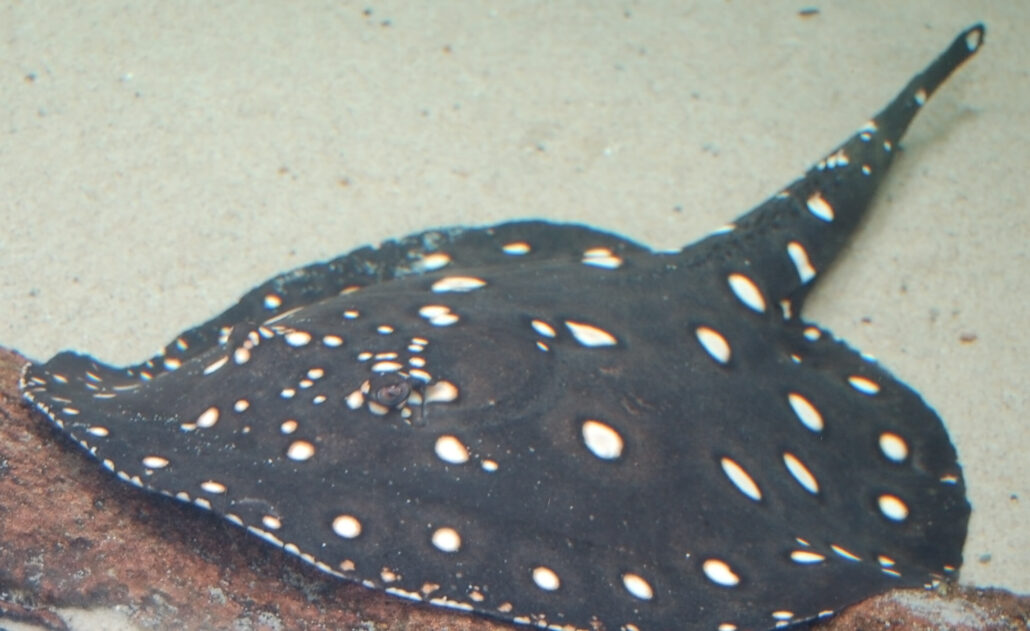
Xingu River Ray is a species of freshwater fish in the family Potamotrygonidae.
This fish species are also well known by two other names! They are also known as the white-blotched river stingray or the polka-dot stingray.
At their maturity age, Xingu River Ray’s length can range from 30 to 40 cm, and the maximum length that this fish can reach is 111 cm.
Xingu River Ray lives in a tropical climate with temperatures between 20°C to 25°.
Its natural environment is in South America, and more specifically the Xingu River basin and the Fresco River. Mostly this species loves being in the freshwater and benthopelagic.
The fun fact is that Xingu River Ray is considered an unsexed or male fish! Its weight can reach a maximum of 17kg.
Xingu River Ray is staying buried in sand during the day and hunting for benthic invertebrates during nigh. It is a night fish that loves to work at night!
14. Xantus Murrelet
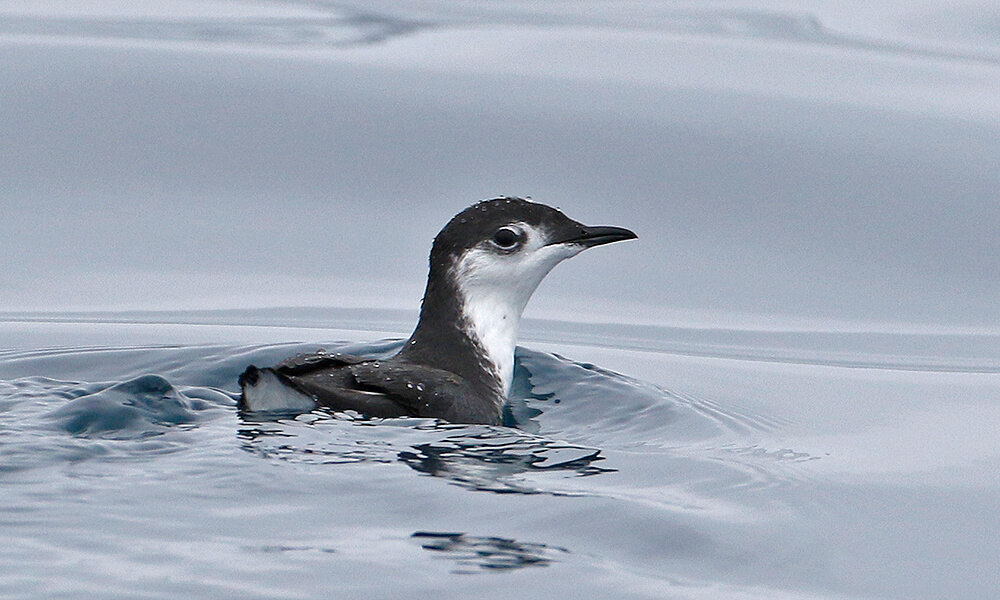
Xantus Murrelet is a seabird species that live in the Californian current system of the Pacific Ocean. Is also known worldwide by the name Guadalupe Murrelet.
This bird species can be found on the west coast of North America, with a range primarily extending from Southern California to central Baja California, Mexico.
During the breading seas in Xantus Murrelets nest in the natural rock crevices, cliffs, and canyons that can be found on most of the offshore islands.
For the rest of the year, these birds leave their nests and fly to the sea, concentrating in deep waters beyond the continental shelf.
In terms of population, these birds aren’t under any threat of extinction!
Portrayal
This robin-sized seabird is covered with black feathers above and white below with incomplete white eye-rings. Xantus Murrelet also is characterised by its short tail, black legs and feet, and the narrow black bill.
Xantus Murrelet is a small bird and its length can reach a maximum of 25 centimetres (10 inches). This bird species have a 38 centimetres (15 inches) wingspan and weigh only 170 grams (6 ounces).
Xantus Murrelets’ lifespan is more than 15 years. These seabirds feed in deep ocean waters on larval fish like anchovies and sardines, as well as small crustaceans and various aquatic invertebrates.
One of their greatest characteristics is that Xantus Murrelets are e wing-propelled divers that fly underwater with powerful, rapid wingbeats in order to catch their prey.
15. Xantus’ Swimming Crab
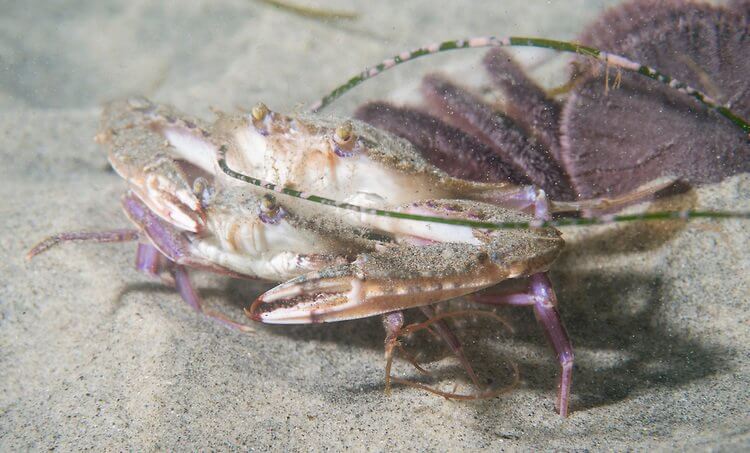
Xantus Swimming crab is another animal that starts with an X and belongs to the species of the crab, in the family Portunidae. Most of the records for this species occur south of Morro Bay.
Xantus Swimming Crabs can be discovered in sandy and muddy habitats far to the north of their normal range.
All the species that belong to the same family have flattened hind legs, which they use as oars while swimming. Their large paddles are used for both swimming and burying in the sand.
Xantus Swimming Crabs are mostly specified by the impressive length of the claws. Their claws also have one purple line that makes them really beautiful.
16. Xinjiang Ground-jay
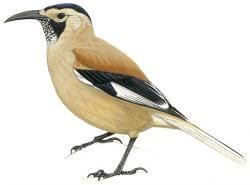
Xinjiang Ground Jay is also known as Biddulph’s Ground Jay and it belongs to the species of birds in the family Corvidae.
Its natural habitat is in northwest China. More specifically Xinjiang Ground Jay lives mostly in areas near Xinjiang, a vast region of deserts and mountains from which it took its name.
It is an odd-looking bird, not larger than a human’s palm. Xinjiang Ground Jay is a ground-dwelling desert nutcracker, with pale brownish colour overall.
Their wings are black-and-white and they have a thick black moustache that broadens and curves up towards the face.
Xinjiang Ground Jay runs swiftly in order to chase down its prey, the invertebrates and reptiles. It mostly lives in terrestrial areas with lots of trees to build nests.
Its natural environment is dry, open areas and expansive scrubs. The most often place that you can see them is elevated vantage points such as posts or snags.
Xinjiang Ground Jay’s voice is mostly like a descending clattery trill and a triad of whistles.
17. Xanthippe’s Shrew
Xanthippe’s Shrew is a species of mammal that belongs to the family of Soricidae. It is a small species of Shrew that can mostly be found in eastern Africa, and more specifically in Kenya and Tanzania.
It lives in dry savanna and shrubland habitats. You can definitely find them in the foothills of Tanzania’s Usambara Mountains.
Although its appearance looks like a rodent, with a long nose, it is not and it is actually related to moles.
Shrews have sharp and spike-like teeth and are really small. Xantippe’s Shrew also belongs to the order Eulipotyphla, a group of animals that also contains moles and hedgehogs.
18. Xantusia

Xantusia is a genus of the three-night lizards. Xantusia is a reptile that is mostly a genus rather than a species that starts with an X. Xantusia is part of the Night lizard family, Xantusiidae.
Xantusia’s natural habitat is North America, Central America, and nearby islands. They are small to medium size reptiles. Xantusias give birth to their young ones rather than laying eggs.
It is worth mentioning that Xantusia lizards are good climbers and usually eat termites, small insects, spiders and other arthropods.
19. Xanclomys
Xanclomys is a small mammal from the Paleocene of North America. It is a species that is currently extinct. It lived about 66 million years, during the Paleocene period.
Xanclomys enjoyed all the terrestrial habitats. It was an omnivorous animal and was feeding with plants or catching smaller animals. Xanclomys were prey on many other larger animals.
Xanclomy was a genus within the extinct order Multituberculata within the suborder Cimolodonta and family Neoplagiaulacidae.
That was a quite long list with most of the animals that start with an X. This list contains mammals, reptiles, birds and fish that are mostly in life and spread around the world.
Most of those animals you have the opportunity to find in the U.S and Africa. It may seem odd that there are so many animals that start with an X, and we have no idea about it!
More animal lists:
